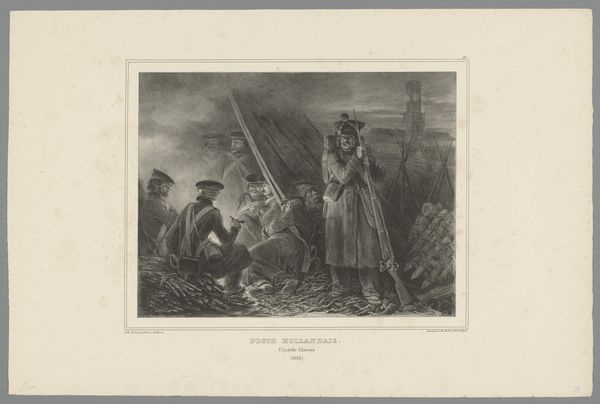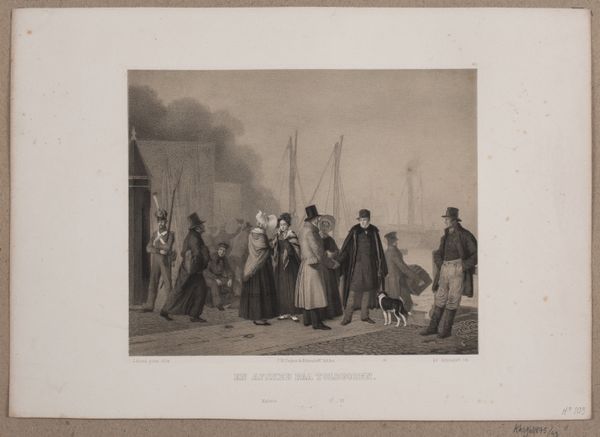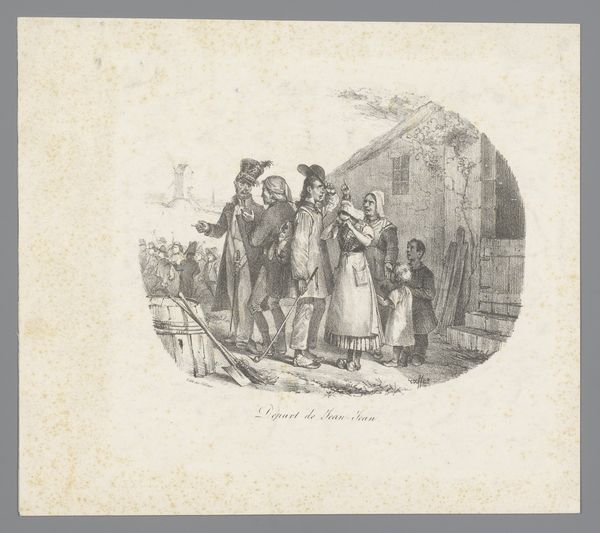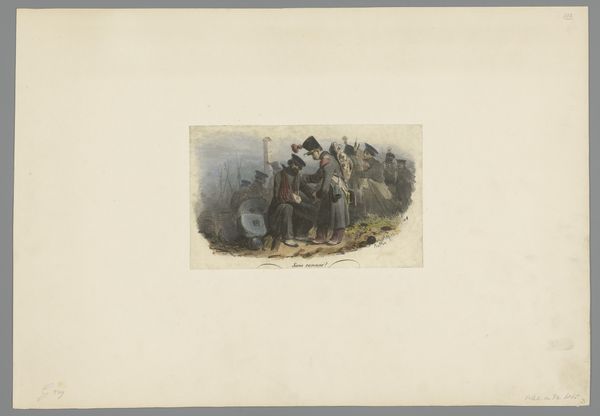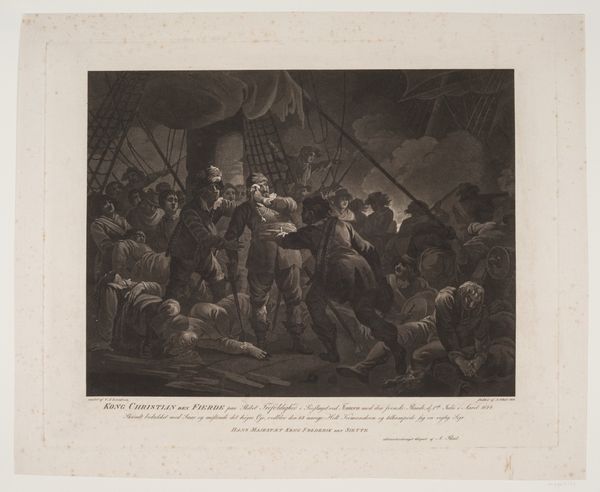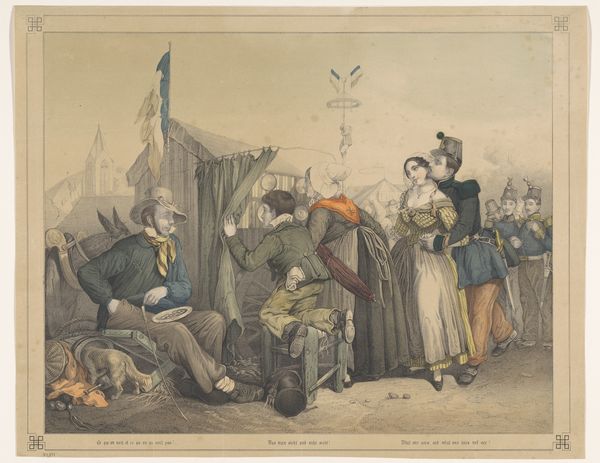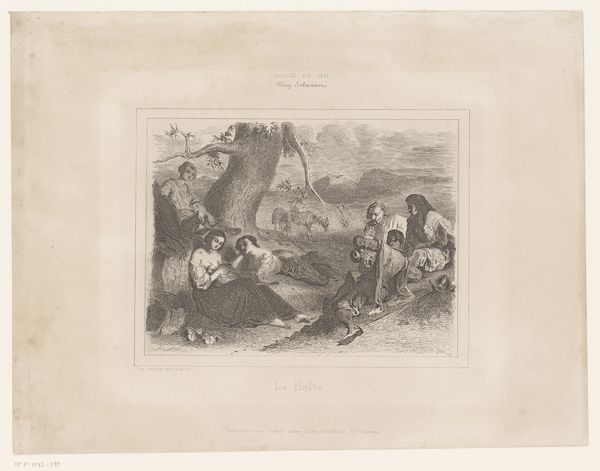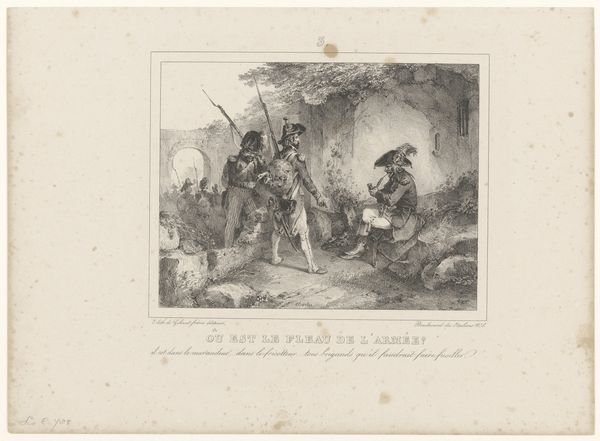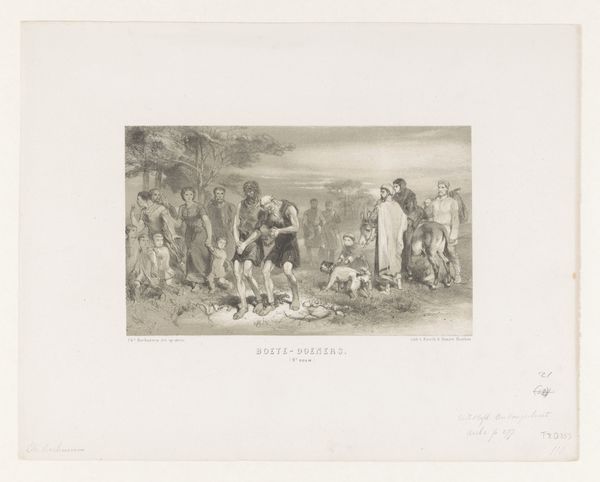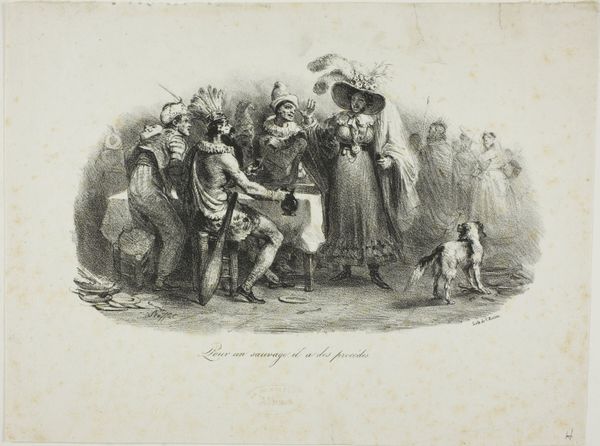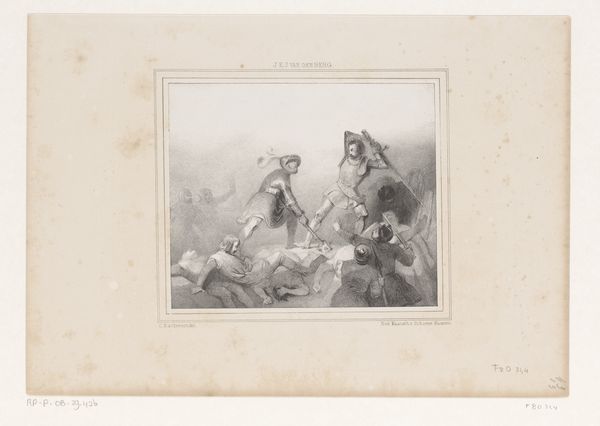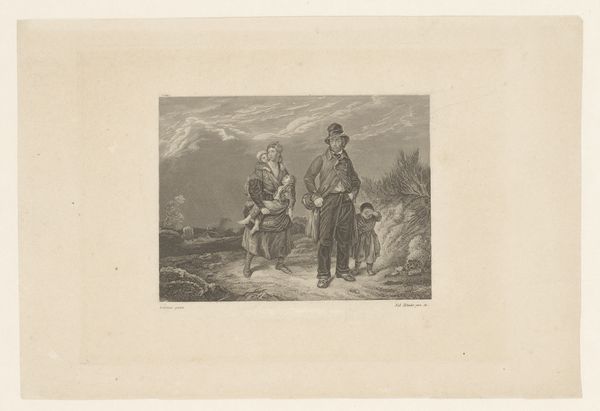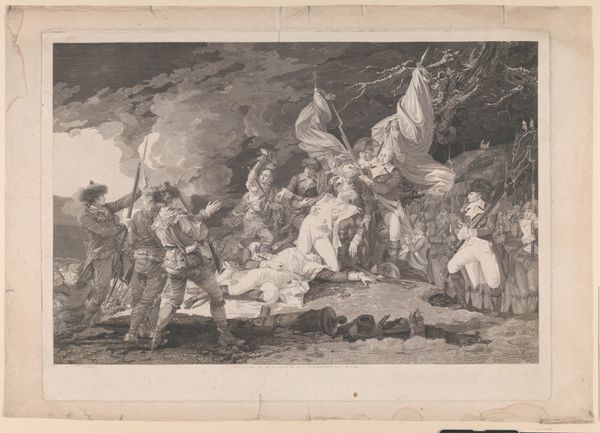
drawing, lithograph, print, paper, ink
#
drawing
#
narrative-art
#
lithograph
# print
#
paper
#
ink
#
romanticism
#
genre-painting
#
history-painting
#
watercolor
Dimensions: height 346 mm, width 422 mm
Copyright: Rijks Museum: Open Domain
Curator: Looking at this lithograph, I feel immediately transported. There’s a palpable sense of…waiting. Of quiet, nervous anticipation, almost like holding your breath before a storm. Editor: Yes, Auguste Raffet created this work titled "Kamp van Nederlandse soldaten, 1832", or "Camp of Dutch Soldiers, 1832" in 1833. It gives us a fascinating glimpse into a moment in military history, rendered in ink on paper. Curator: Absolutely. The greys and blues, the smudges and fades in the drawing – they all suggest the damp chill of the air. I can practically smell the musty canvas of the tents and the damp earth. Editor: Precisely! And considering this comes from the Romantic period, we can analyze the nuances within the depicted "genre painting." How might the experience of conflict shape national identity? Curator: That's an interesting way to think about it. To me, the appeal lies more in the human story here. There is almost a tangible texture to these figures. I want to reach out and touch the rough cloth of their uniforms. See the expressions on their faces, the tension in their shoulders...it’s incredible how much emotion is conveyed with so little color. Editor: And it is worth mentioning what the lack of color signifies within history, what kind of identity and status the people in this community might have had... The visual language is undeniably potent and contributes significantly to the artwork’s narrative strength. The lithographic style and form became a symbol of accessibility. Curator: You are right! And look at how Raffet uses light. The way it flickers on the bayonets, glances off the helmets... it feels so authentic and so human. Even timeless. You forget it’s a record of one specific historical moment. It resonates with something deeper. Editor: I find myself reflecting on the accessibility of art in that time, especially art addressing or depicting the realities of military life. How does a work like this serve to inform, perhaps even influence, public perception and, by extension, the sociopolitical climate of its era? Curator: That’s a heavy thought to end on, but important. Still, I keep coming back to the artistry itself, the skill and sheer genius on display here. To convey so much, with so little. That's real magic. Editor: Agreed, a powerful glimpse into a past, framed for our present.
Comments
No comments
Be the first to comment and join the conversation on the ultimate creative platform.
